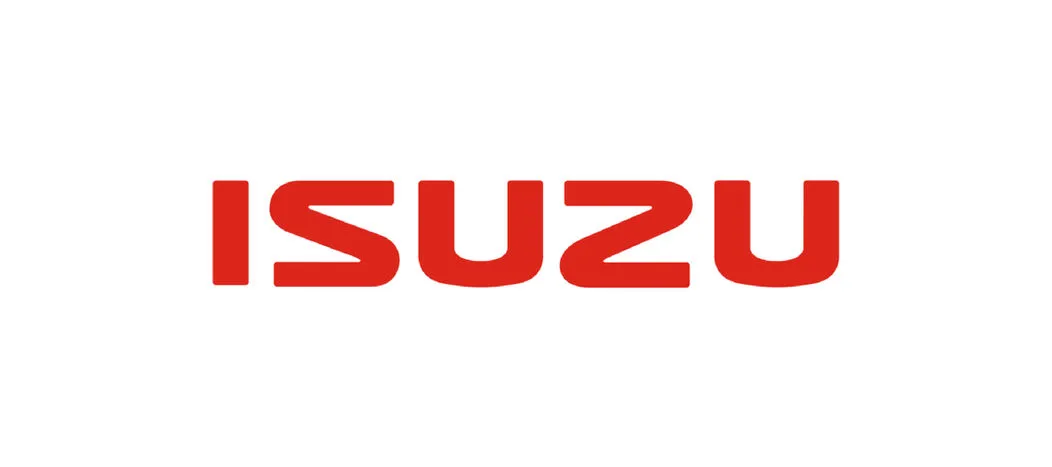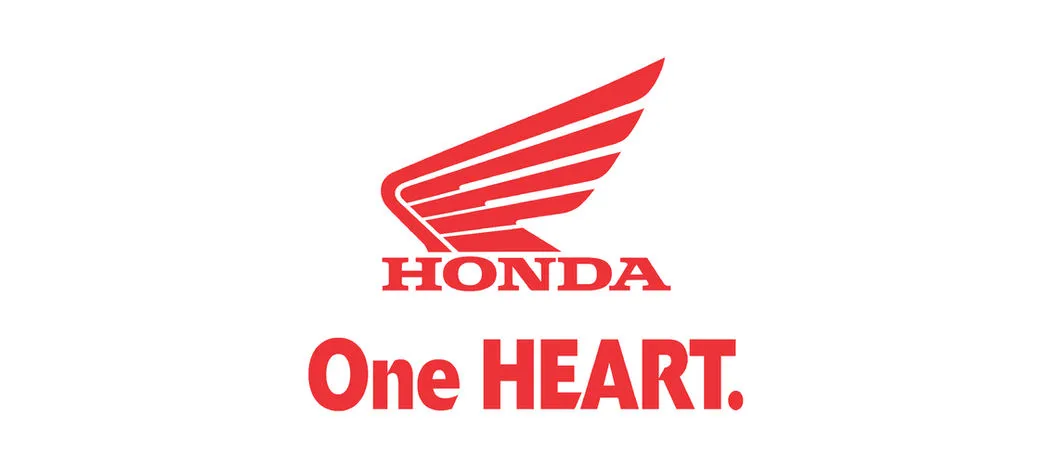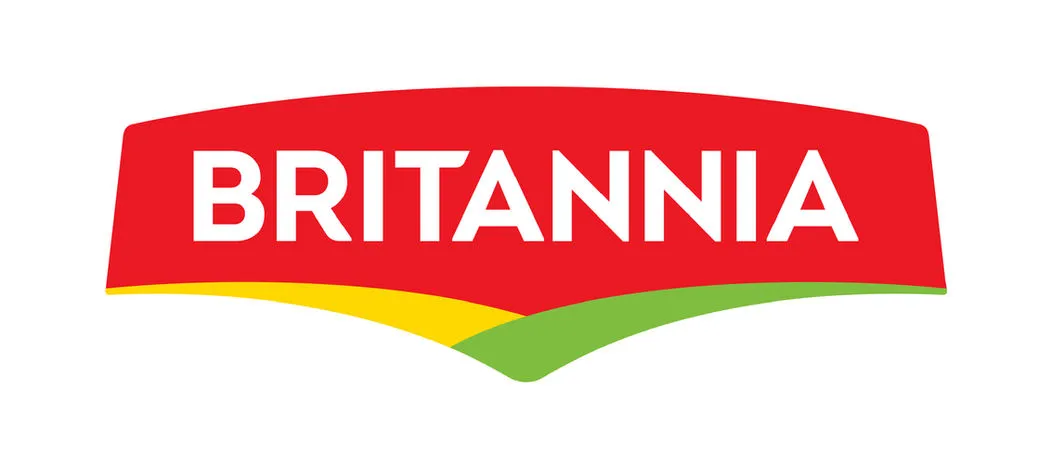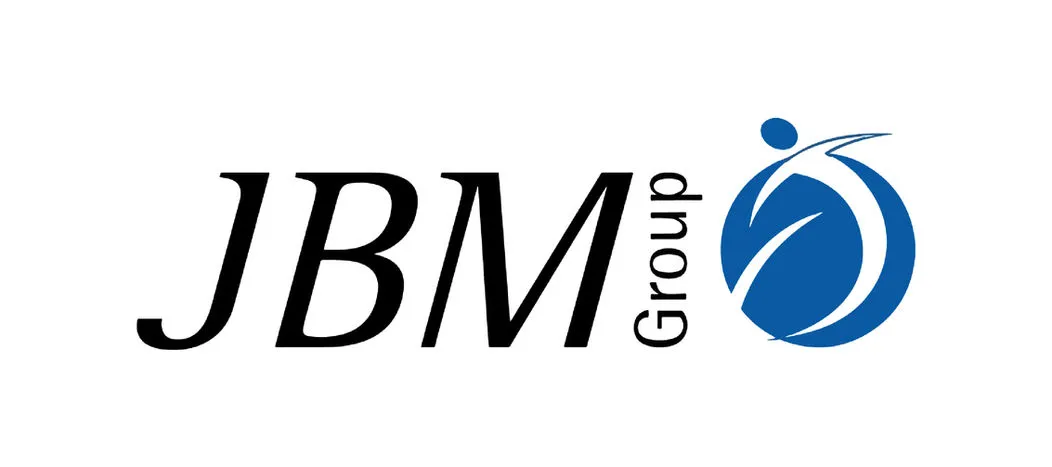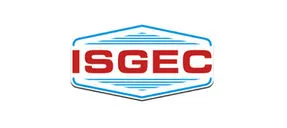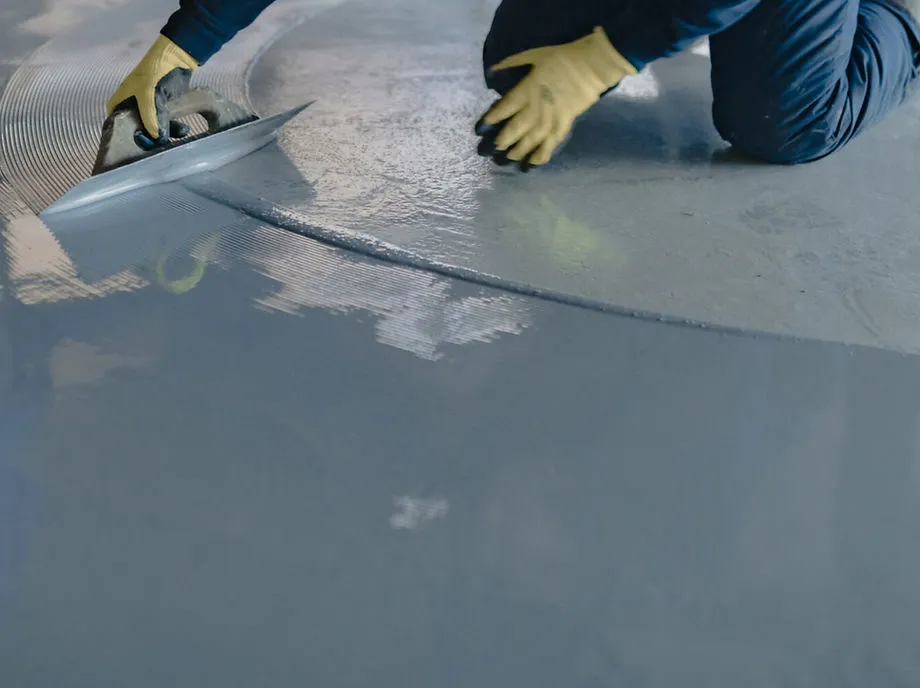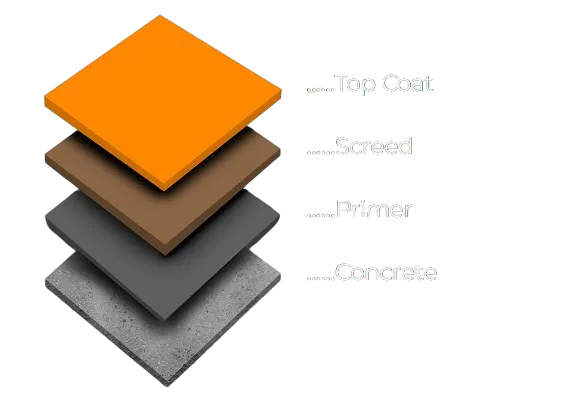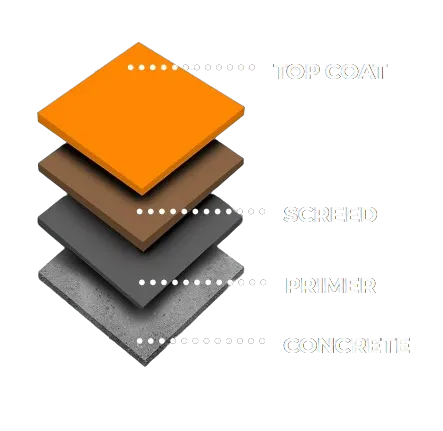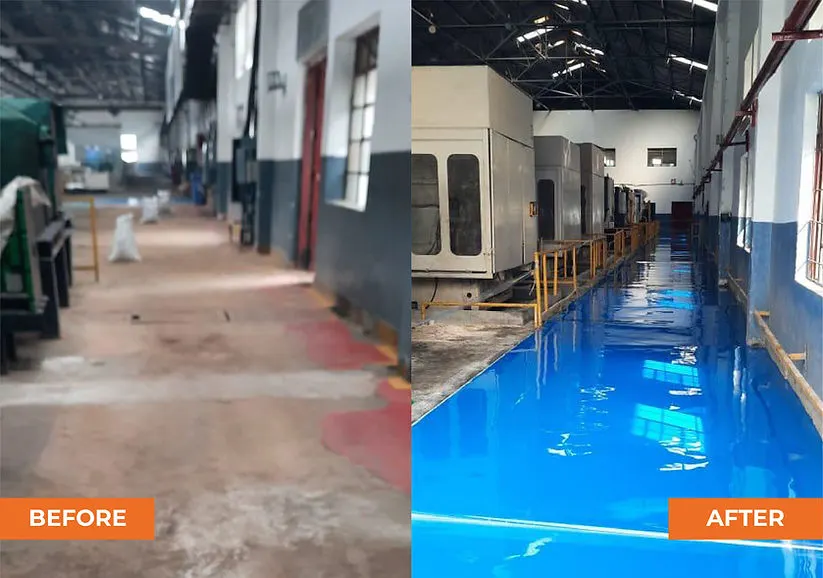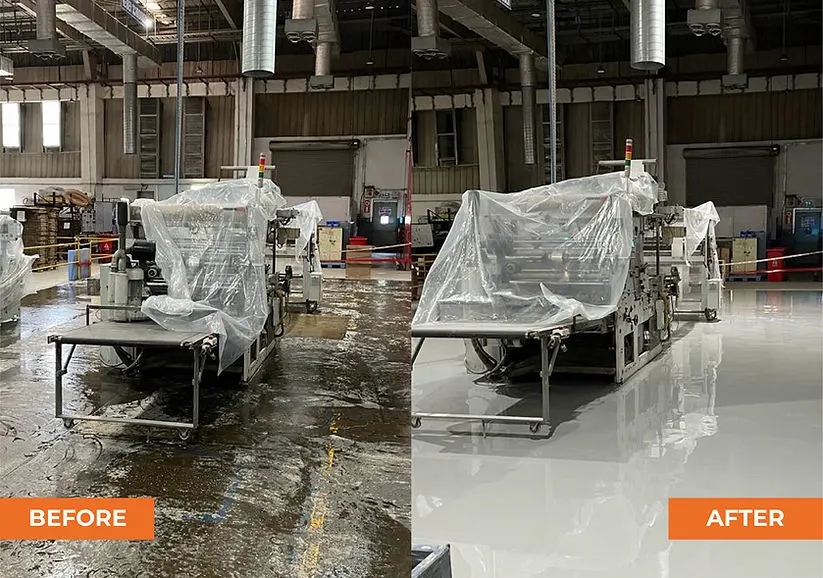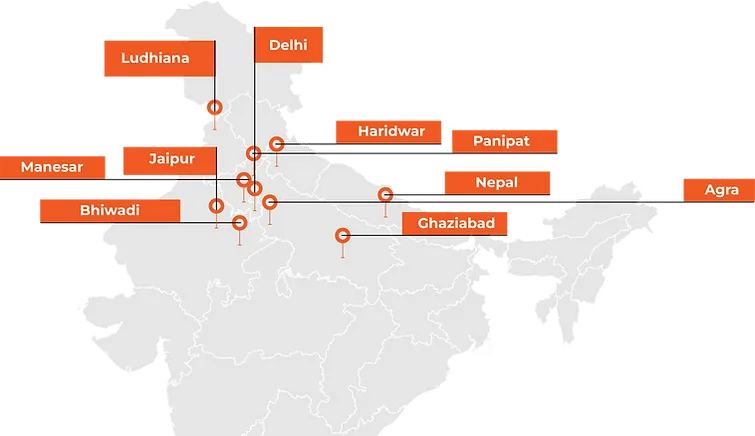Heat is released during the chemical reaction that converts liquid part A and part B into solid epoxy. The amount of heat released depends on the epoxy’s chemistry and the amount of epoxy used. That is, a certain amount of mixed part A and part B will result in the release in a certain amount of heat.
The curing epoxy must be able to shed the heat it generates efficiently enough to avoid overheating. The ability to shed heat is largely governed by the ratio of top surface area that is open to the air relative to the volume.
For the same resin system, thinner castings will have greater top surface areas in comparison to overall volume and will shed heat more efficiently. Thicker castings cannot shed heat as efficiently and may overheat.
For the same volume of epoxy, a thinner casting will have a larger top surface area and will shed heat more efficiently compared to a thicker casting with a smaller top surface area.
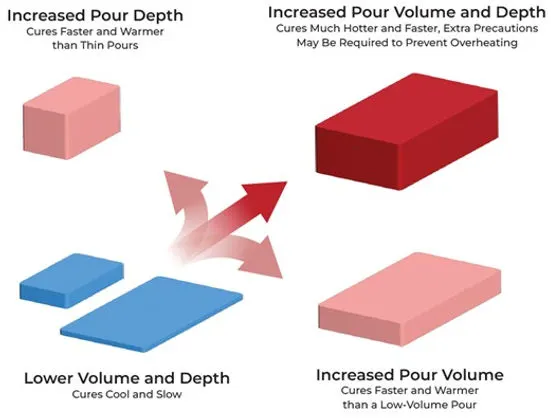
EcoPoxy systems are developed to have reactivity levels suited to their intended applications. Always consult your product’s Technical Data Sheet or Application Guide for recommended volume and thickness.
